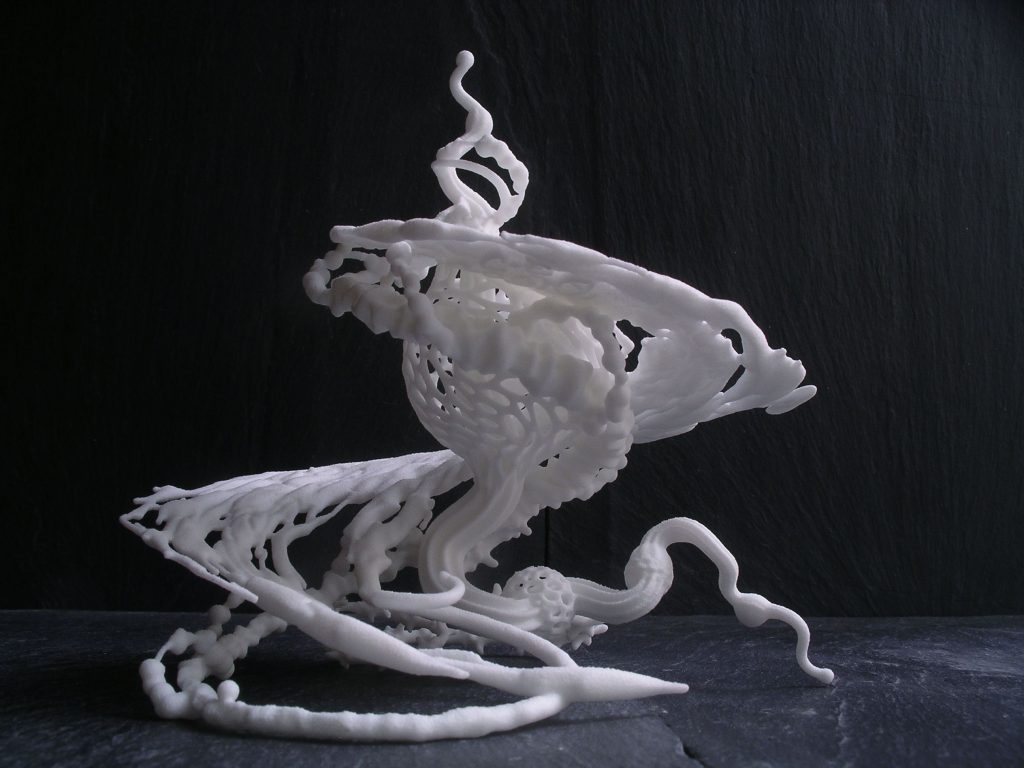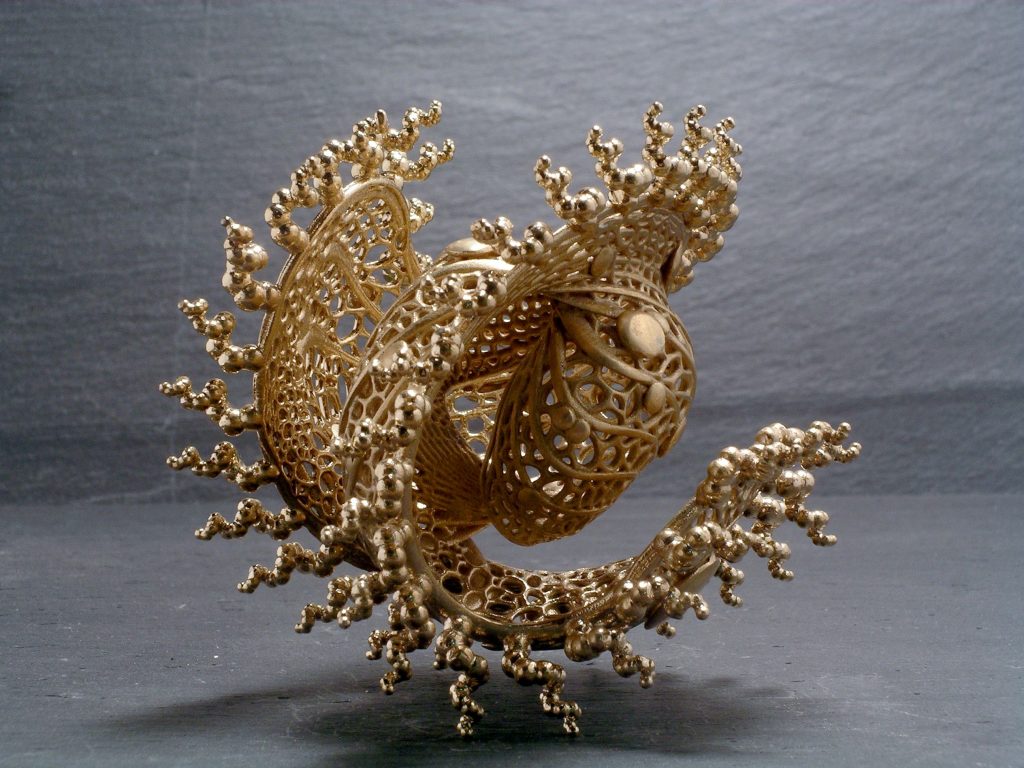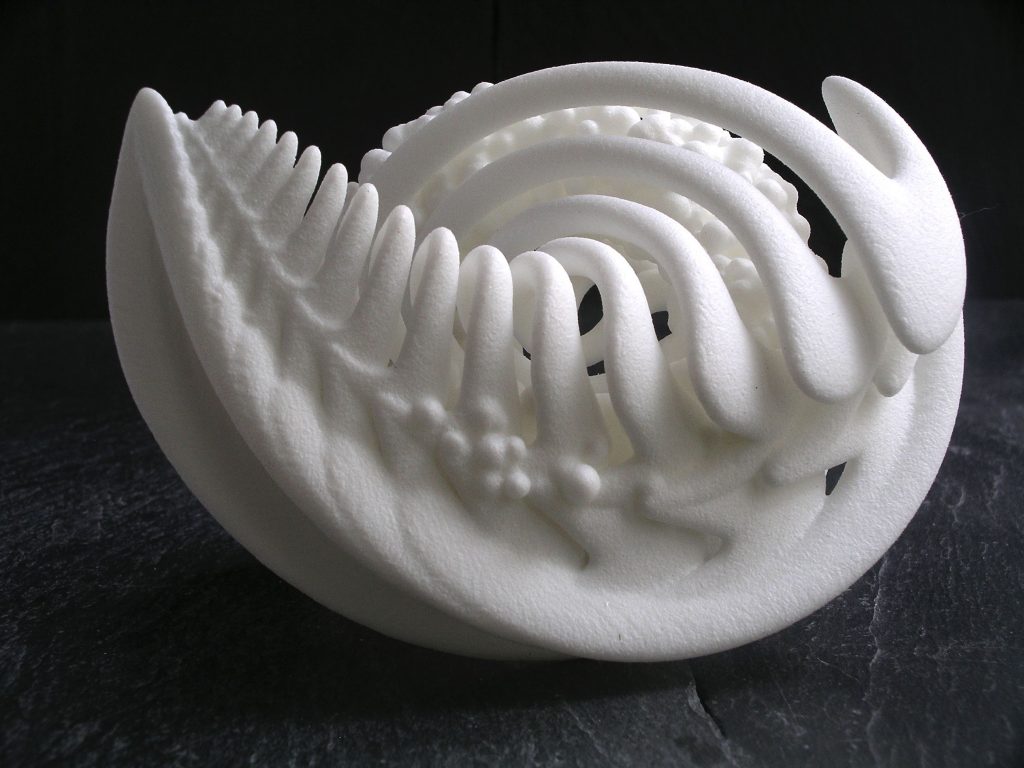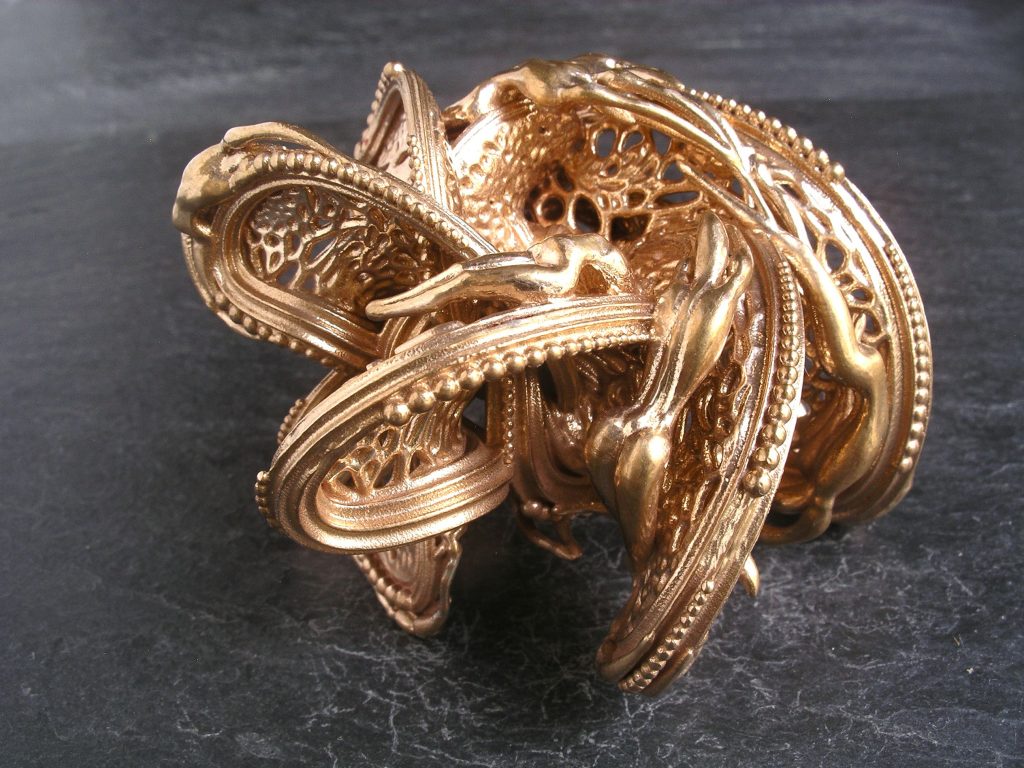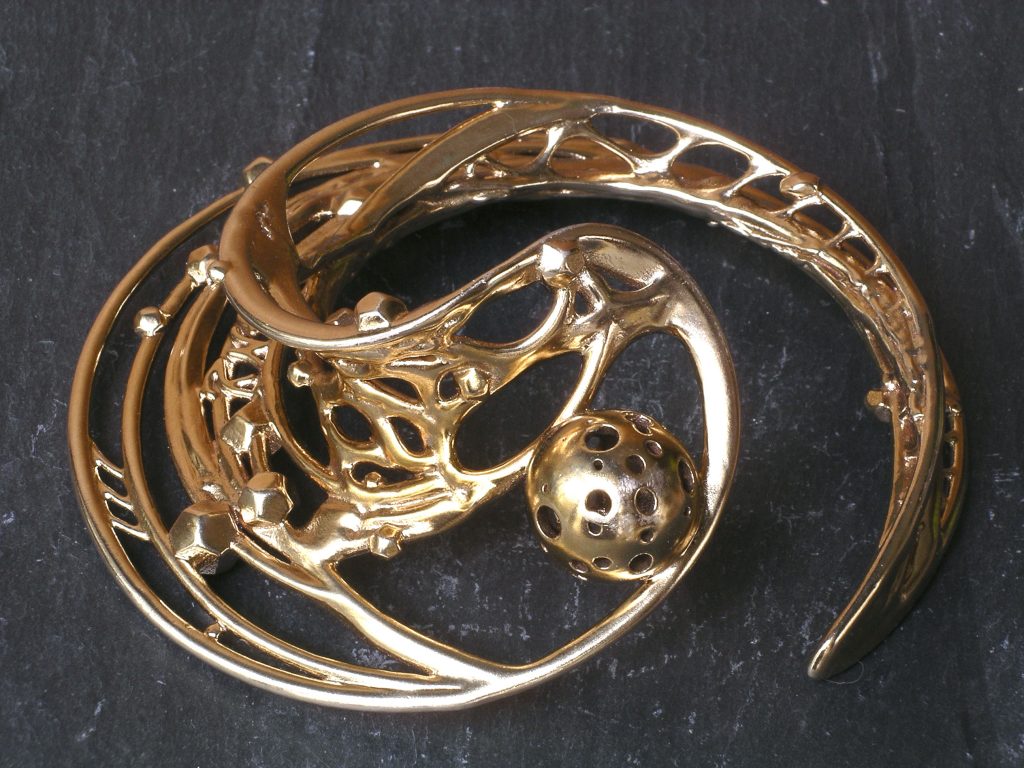
The Advantages of Sculpting with 3D Printing: Interview with Sculptor Charles-Eric Gogny
Charles-Eric Gogny is a professional French sculptor who has embraced 3D printing and 3D design from a very early stage. He is fascinated by organic forms and tries to show imaginary representations of the universe and existence through sculpture: everything is movement, metamorphoses, and microcosms meeting macrocosms. This results in chimeric creatures; a mix of human, animal and vegetable.
Charles-Eric explained to us how he designs for 3D printing in bronze and polyamide, and how this new way of working has allowed him to continue sculpting even after he was diagnosed with Parkinson’s disease.
Your artistic formation was very traditional. How did you discover 3D design and 3D printing?
I first approached 3D design in the beginning of the 90s, when I collaborated with the company Ex-Machina as a sculptor and modeler for the first films with computer-generated images. At that time, for complex characters, it was preferable to draw a mesh on a real volume and then grab it point by point to get it into the computer.
Later on with the development of online printing services, I started 3D printing, obtaining quality results without the need to invest in expensive and delicate equipment. However, until now I have limited myself to smaller, less expensive formats.
How has 3D printing changed sculpting and design?
Obviously, 3D printing and 3D modelers have changed the sculpture, whether in terms of design or execution. 3D printing offers the ease to produce shape variations, assembly, symmetries, displacement mapping, movements, physical effects, fractals, etc. It also offers the possibility to realize interior volumes.
But the amazing thing about 3D printing is the transition from the virtual image to a real object!
How is 3D modeling different from sculpting with your hands?
Computer modeling seems more intellectual and reflective than manual modeling: one can start from designing with your mind to visualization on the screen by setting parameters. It requires less manual skill and that opens a world of possibilities!
There are 3D tools that mimic clay modeling, random parameters, but I miss the touch, the unconscious gesture of the hand. When one works with real volume, the hand perceives the response of the material but on the computer only the eye can perceive the virtual material.
The problems posed by sculpting such as storage, space and the weight of materials or armatures, have become problems such as disk-space, file weights, skeleton, mesh cleaning, etc. But what still remains the same is the requirement of knowing how to produce and to choose the shape that we want.
How has 3D printing helped you to keep sculpting despite having Parkinson’s disease?
Parkinson’s disease hardly allows me to draw freely, nor model clay, plaster or wax. Fortunately, I can still handle the mouse. Today, with 3D printing, I find pleasure in presenting my “views of the mind” in tangible sculptures! And even better, to concretize shapes that I could not have realized or even imagined before!
You use Blender and Meshmixer to design your models in 3D. Why did you choose these software programs?
These two programs have the great advantage of being free and they are relatively easy to use, well-documented, with many tutorials and add-ons for Blender.
Can you give some tips on designing for 3D printing?
Sometimes I start from a mental image, or a sketch with a pen, and I look for the tools to realize it. Then, by manipulating the tools of Blender, I sometimes find completely different but interesting shapes to develop.
For complex assemblies, with many intricate elements, or if the mesh intersects with itself, Boolean operations are too difficult to perform. In these cases, I use Meshmixer‘s “Make Solid” tool which, at the same time, automatically adjusts walls that are too thin.
The offset tool is very useful to locally adjust thickness problems with a gradual transition.
Your 3D-printed sculptures are made in bronze or polyamide (SLS). Why do you prefer these 3D printing materials? Do you design differently with each one?
Polyamide (SLS)
I started by experimenting with white polyamide because of its low cost, the absence of support structure and the possibility of making interior volumes. The mechanical qualities of polyamide allow for a certain elasticity for finer elements.
The granular white of natural polyamide has a tendency to drown weak reliefs, which is why I try to attract the eye with the power of the general composition, the game of full and empty lines, or cut effects.
I am also trying to define the space with a minimum of materials by providing large, hollowed-out volumes. I like the slight traces of strata on the polyamide prints, they are like the paper grain for watercolor.
In the same way, some irregularities of the model appear as welds, or a testimony of the manufacturing history of the object.
Bronze
I like bronze for its strong and durable appearance, its weight in your hand, and especially its adaptation to almost all shapes. It permits much more detail than polyamide.
I use its reflective qualities by multiplying the smaller elements to make it sparkle and give it a precious appearance. I use lines rather than surfaces to define volumes, which helps me occupy more space at a lower cost.
Can you give some tips for 3D printing with bronze?
For lost wax bronze, I plan some convex surfaces in the design, smooth and without details, to place the sprues, because after removal it will be easier to erase their traces.
For the solidity of the piece and to ensure the mold is supplied well during the melting stage, I connect the long thin rods to the main volume.
Discover more of Gogny’s work on his website or, even better, visit him in his atelier in Paris.
Start sculpting for 3D printing yourself with one of these software programs for sculptors and learn more about all the materials available for your creations. Have a look at other design tips from professional 3D designers and create 3D models perfect for 3D printing. Once they are ready, you can easily upload them to our online 3D printing platform.
Featured image: Virgule. Bronze. Natural (Uncoated)
All imges by Charles-Eric Gogny designed with Blender and Meshmixer
Recommended Articles
No related posts.



